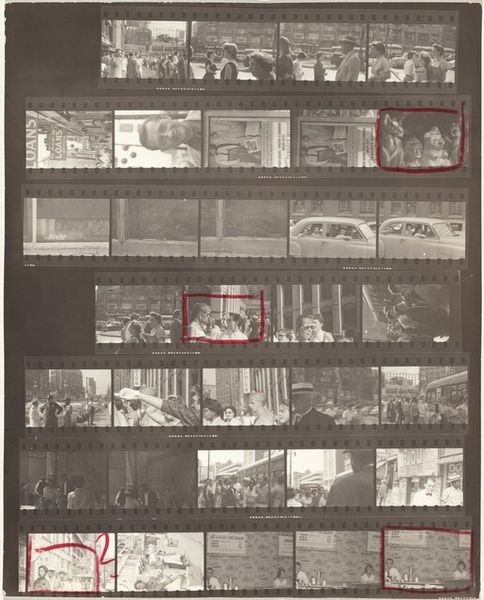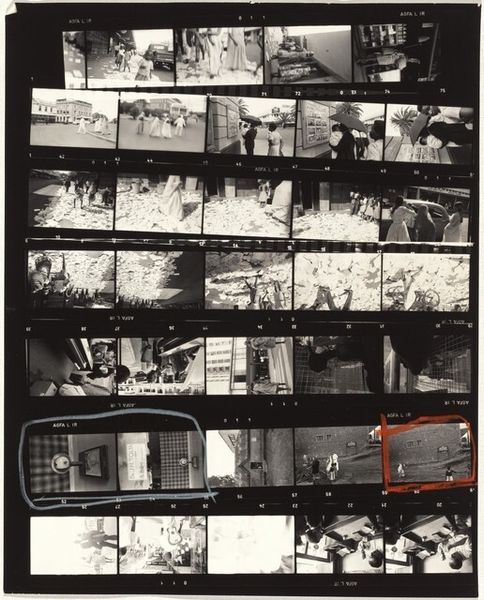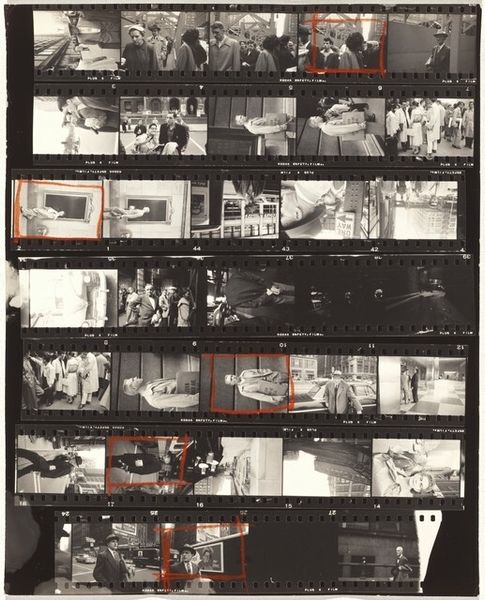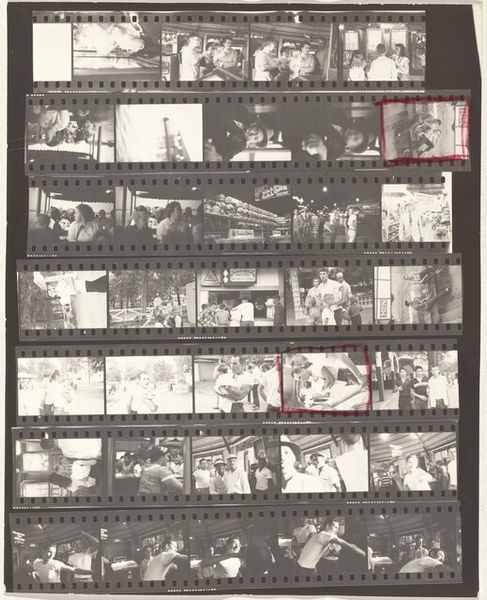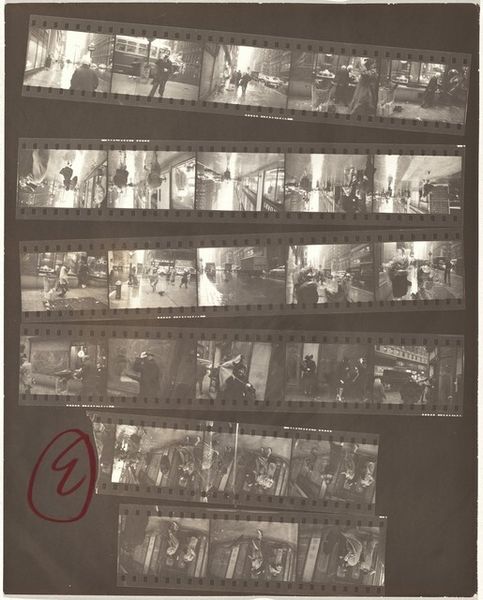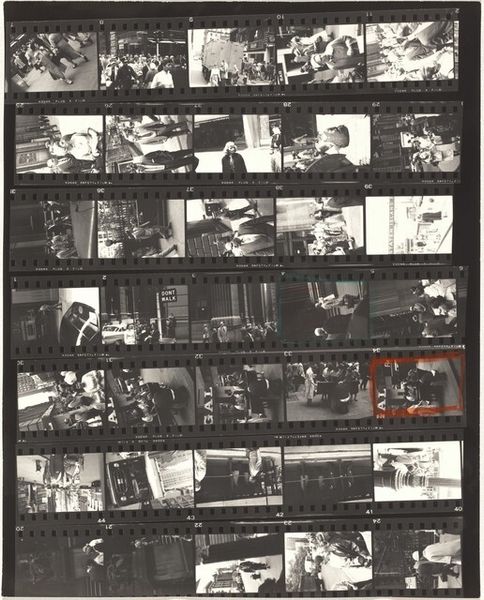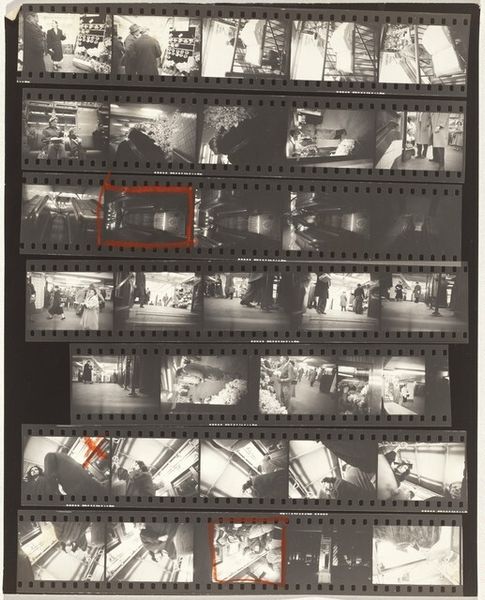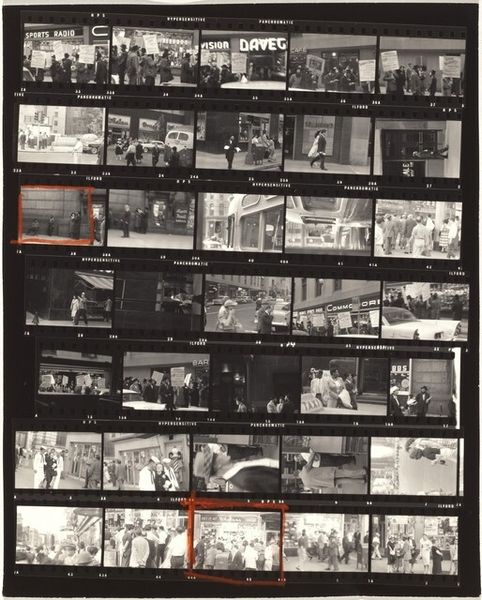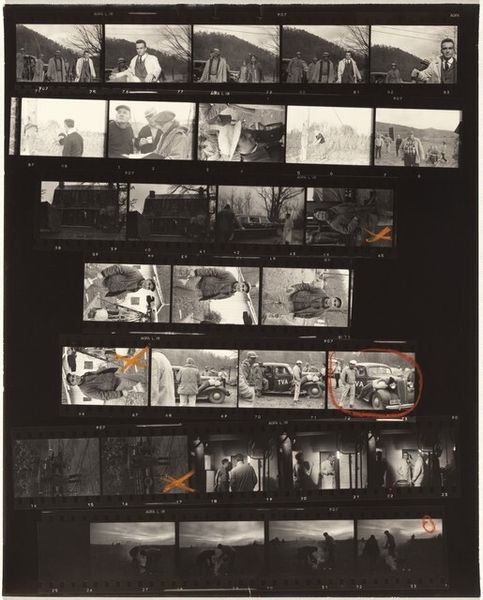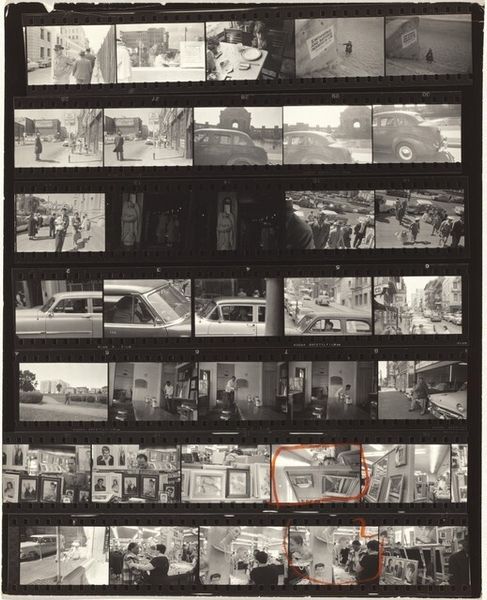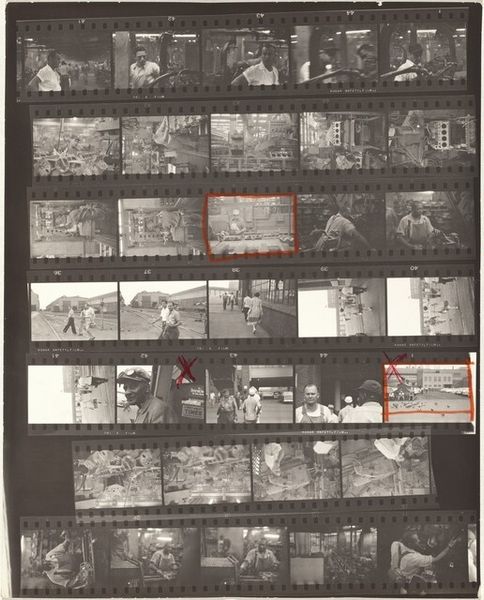
print, photography, gelatin-silver-print
# print
#
landscape
#
street-photography
#
photography
#
photojournalism
#
gelatin-silver-print
#
modernism
#
realism
Dimensions: overall: 25.3 x 20.4 cm (9 15/16 x 8 1/16 in.)
Copyright: National Gallery of Art: CC0 1.0
Curator: These frames, a gelatin silver print by Robert Frank titled "Guggenheim 85/Ford 8--Detroit" from 1955, offer an unusual presentation. I’m initially drawn to the layering effect of the photographic strips, reminiscent of industrial processes themselves. What strikes you most about this work? Editor: Well, seeing the whole strip laid out like this feels different from a single print. It makes me think about the artist's selection process – what got chosen and what didn't, but also about the industrial nature of making the photo and about mass-production. What does this organization tell you? Curator: Exactly! Frank isn't just presenting a finished product; he's revealing the labor and the mechanisms behind image production. These aren’t simply 'snapshots'; they're artifacts of a very specific, industrial method. Notice the inherent contrast in Frank using photographic means, associated with 'high art', to document scenes of manual labor involved in manufacturing consumer goods. Do you see any visual evidence relating materiality in any of the frames? Editor: Some of the frames showcase the factory and its laborers quite effectively. How are those themes echoed throughout the organization of the material? Curator: Consider the gelatin silver print itself, a mass-produced photographic process at the time, much like the cars being assembled in the factory. The repetition of frames echoes the assembly line, highlighting the materiality of both photography and automobile production. The work underscores the role of photography as both a document and a product, deeply intertwined with industrial and consumer culture. Editor: I didn't consider that – that’s interesting, about both photography and car-making at the time having similar materiality. It puts Frank's choices in perspective. Thank you. Curator: Of course. Reflecting on this further, it seems that in highlighting the process and materials, Frank blurs traditional boundaries of artistic practice.
Comments
No comments
Be the first to comment and join the conversation on the ultimate creative platform.
